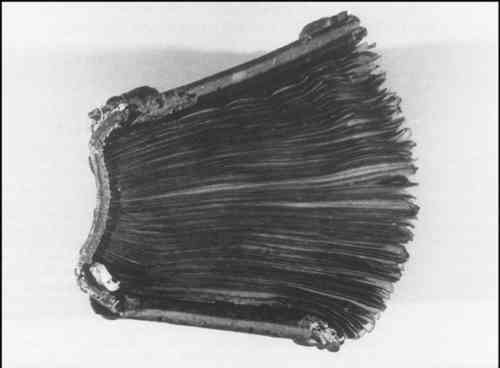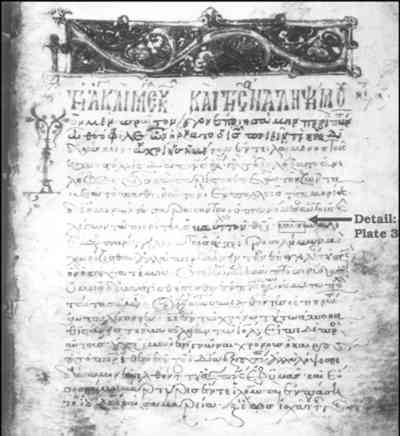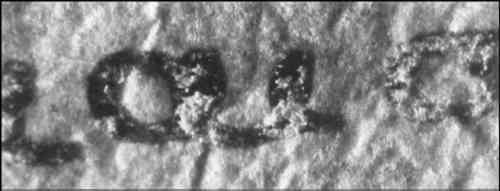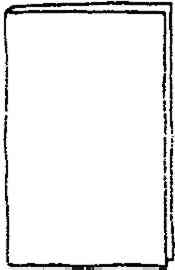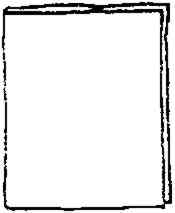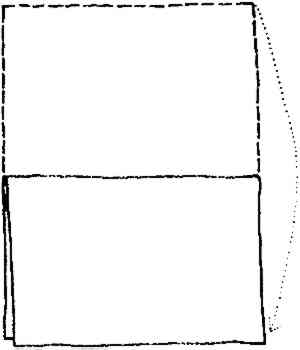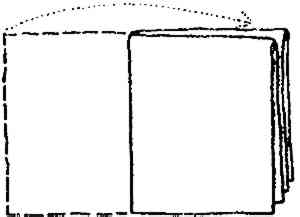A BYZANTINE SCHOLAR'S LETTER ON THE PREPARATION OF MANUSCRIPT VELLUMJeffrey Abt, & Margaret A. Fusco
ABSTRACT—Translation and commentary on a letter, dating to ca. 1295 C.E., in which the head of a Byzantine scriptorium describes contemporary manuscript vellum preparation techniques and problems. 1 INTRODUCTIONIN COMPARISON TO THE RELATIVELY LARGE NUMBER of painters' manuals and model books that have survived over the centuries to reveal the methods of Western scribes and illuminators, few such sources on the manuscript techniques of Byzantium exist. For this reason, the pieces of evidence that have endured assume special importance. One of these is a letter written by the distinguished Byzantine theologian, translator, grammarian, and rhetorician Planudes (of Constantinople, ca. 1260–1330). As head of the school of the monastery at Khora, which possessed a great library, Planudes was often concerned in his correspondence with locating fine parchment for the creation of manuscripts. The following translation and commentary on a letter by Planudes offers insights into the problems and practices of Byzantine vellum preparation. The information comes in the context of a request Planudes made to the monk Melchisedek of Akropolita (in Asia), who apparently was to purchase a supply of vellum for Planudes' use. Two sections of the letter are important today:
This translation is based on a transcription of the letter in Maximi Monachi Planudis Epistulae, ed. Maximilian Treu (Amsterdam: A. M. Hakkert, 1960), 135. Text in brackets, paragraph divisions, and punctuation have been added for clarification. Italicized words in brackets are transliterations of certain key terms where the Greek does not translate precisely. Superscript numerals refer to comments on both the translation and possible interpretations of the wording in the Greek original. The use of the word “parchment” in the translation is consistently followed to maintain 2 PLANUDES TO MELCHISEDEK OF AKROPOLITA“Since you completely agreed to work for us on the parchment leaves [membranas], then you absolutely ought to keep on so doing; especially so if we notify you in writing and if that which is written down is neither troublesome nor difficult for you. “These [parchment leaves] must be fine,1 lest we might in some way assemble a pot-bellied codex2 from a few thick [parchment leaves], but so that from many finer [parchment leaves we might make] a better-polished [codex],3 as it were. “Now you should never encrust these [parchment leaves] with egg [albumen], for this is the very thing from which they suffer, the letters from the egg, that is, and not [the parchment leaves] themselves.4 For if they should somehow see water, the writing on them erupts and quakes with the egg, and the work of the scribe turns out into thin air, clean gone.5 For the egg lies in the middle space between the writing and the parchment leaf, and when it is wet, it washes away the writing with it.6 “Furthermore, you were sent two [sample] measures7 of bifolium leaves [diphyllon]8 through the person [messenger] present to you,9 of which for the larger size [bifolium leaf (sample A)] you will buy small parchment leaves with half the money, and each [parchment leaf] will render one bifolium leaf according to the length and the width which you see [in the sample].10 But for the rest [of the bifolium leaves (sample B)] which are smaller, you will buy larger parchment leaves with the rest of the money, so that you can cut each parchment leaf into two bifolium leaves, again according to the length and the width in the measure [sample] you have.11 “Now, I do not want to tell you that these [parchment leaves] must be clean, for you already know this; and that they must be sent quickly, I say this firmly and moreover, I repeat it. For if they should not come quickly, you will dull my gratitude. But I wish you to fare well in everything and to furnish your friends with nothing worse than swift favors.” NOTES1. By “fine,” Planudes appears to mean “thin.” 2. “Pot-bellied” may refer to the marked tendency of the vellum in some Byzantine manuscripts to cockle, resulting in an overall appearance that this language rather aptly describes (see plate 1).
3. By “better-polished,” Planudes clearly means “well-finished.” However, this terminology does draw attention to the Byzantine preference for glossy, polished surfaces in works of art. One example of this preference is the frequency with which Byzantine vellum exhibits a far more shiny appearance than is usually found in 4. Note Planudes' insistence that the egg coating, not the parchment, was the source of the problem. The purpose of the egg coating is unknown; however, it may well have been to impart a shiny or polished look to the leaves. Cennini felt egg glair provided an excellent intermediary ground for secco mural painting. See Cennino de'Andrea Cennini, Il libro dell'arte, The Craftsman's Handbook, trans. D. V. Thompson (New York: Dover, 1933), 51. Much of Cennini's advice reflects Byzantine practices that came to Italy from Greece, as argued by Ernst Berger, Quellen und Technik der Fresko-, Oel-, und Tempera-Malerei des Mittelalters (Munich, 1897), 96–97, and G. Loumyer, Les traditions techniques de la peinture medievale(Brussels, 1914), 116ff. 5. Even without the presence of water, flaking script in Byzantine manuscripts, while not as common as flaking pigment, does occur. However, the phenomenon is often incorrectly though plausibly described as “faded ink” (see plates 2, 3).
6. For a hypothesis concerning the Byzantine use of egg to coat vellum and the effects of this practice, see Abt, “Deterioration Mechanism in Byzantine Manuscript Illuminations of Greek Origin,” 1–14. For a recent confirmation of the use of egg as a medium in Byzantine illuminated manuscripts, see Mary Virginia Orna et al., “Applications of Infrared Microspectroscopy to Art Historical Questions Regarding Medieval Manuscripts,” In Archaeological Chemistry IV, Advances in Chemistry Series 220, American Chemical Society, Washington, D.C., 1989. 7. As will be seen below, by “two measures” Planudes means two sizes of prepared parchment (see figures 1a, 1b).
8. By “bifolium leaves,” Planudes means single sheets of vellum that have been folded to make double (bifolio) leaves (see figures 2a, 2b).
9. Apparently Planudes had the messenger carry with the letter a pair of sample bifolia to demonstrate the sizes he required. 10. Figures 2a, 2b. 11. Figures 3a–3d.
 Section Index Section Index |
